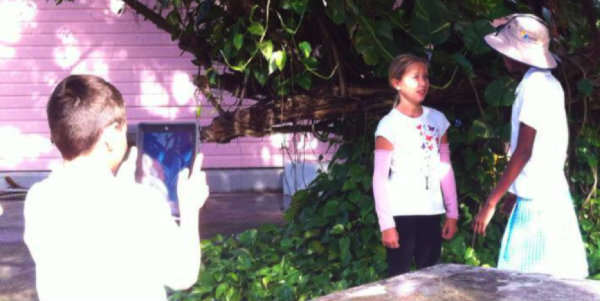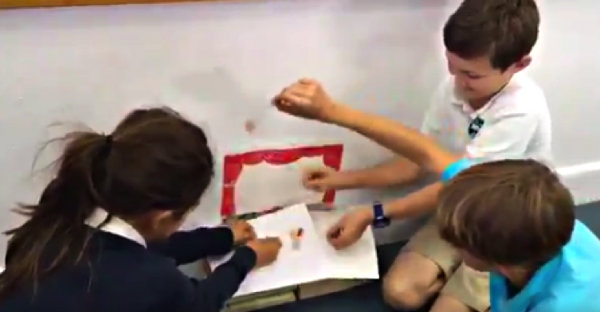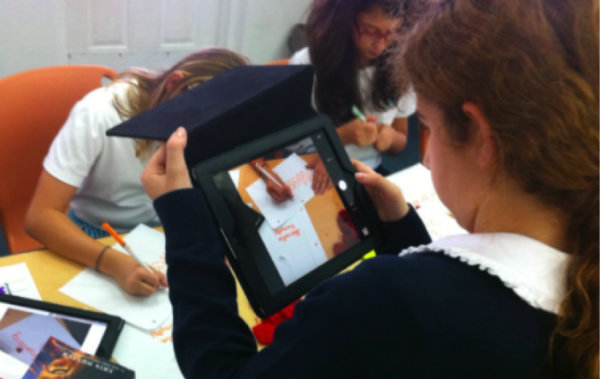Get Your Middle School Kids into GIFs Next Fall
 By Megan Kelly
By Megan Kelly
We’re all familiar with GIFs: eye-catching repetitive clips that are widely used across social media. GIFs are a shorthand method to present information or an emotion in a way that appeals to brief attention spans.
For teachers, creating GIFs to use in your presentations and class sites is a fun way to engage students and share information. However, it’s more empowering to teach students how to make GIFs and see where their creativity takes them.
Here is an excellent tutorial on how to make GIFs using GIFmaker.me. If you want to add text to a GIF, ezgif.com makes it easy. If you have Instagram, you can also use the Boomerang option in the Stories function to record GIFs on your phone.
Here’s another how-to post with some links to examples and resources: Pinky’s Ed Tech Favorites – Students Creating GIFs
When using GIFs, it is important to discuss digital citizenship. Students may be so enthusiastic to find fun GIFs that they can come across inappropriate material. This is the perfect time to talk about responsible online behavior.
My first exposure to the idea of using GIFs in the classroom was David Theriault’s brilliant blog post about claim and counterclaim writing exercises. He had students take photos or create GIFs that look like they are in an epic battle and include their arguments in the visuals.
My sixth grade students did the same assignment on topics of their choice. They put great effort into researching their best arguments, so when it came time to actually write their arguments, it was the most painless essay they ever had to write. These students put so much thought into what would make the best GIF that some spent recess time planning and filming so that they would truly be perfect.
If adding GIFs to the assignment is all it takes for students to be engaged in their learning, it was time for me to think about how else they could be used in a middle school setting.
Plan to kick off the school year with GIFs
As a language arts teacher, I have frequently been told that the students have to “create something” that demonstrates that they did the summer reading, but it should be ungraded. Instead of drowning in dioramas and book reports, it is an excellent use of time in the first week of school to teach students how to make GIFs.
They can then retell the plot, act out scenes they wish were in the book, or anything else you want them to share. Best of all, it teaches them a skill they can use all year and tells them that your class is one where they will be challenged to think in a new way.

Students create GIFs based on their summer reading of Bridge to Terabithia.
Once students have the skill of GIF creation, they should be able to practice it. In any class that requires the memorization of vocabulary, GIFs are a fun way to enhance understanding. In a social studies class I taught, students were learning about the different forms of government. In small groups, they used gummy bears to create GIFs that they felt explained each type.

Students use gummy bears to act out various forms of government via GIF.
As a class, we watched everyone’s GIFs (a benefit of the clips being so short) and discussed which was the best example for each form of government. Those GIFs were then added to our class site. Students gained so much understanding from their peers’ explanations.
A common refrain from math class is that students should show their work. By creating GIFs for the different steps of a problem, students think deeply about what the process is and how best to represent it. This creates a resource to which they can refer back, or may highlight for teachers where a student is getting confused.

Another place where GIFs can be used to break down steps is in science class. Teachers can use GIFs to show the different steps of an experiment, then students can create their own to incorporate into their lab reports. GIFs can also be used in assessments: provide science GIFs on a Google form and have students explain what is happening in the clip.
A GIF demonstrating how a Slinky appears to defy gravity – for a moment. A memorable way to teach about springs and tension!
End-of-year GIFs
There are tons of GIFs that help explain scientific content. As a review activity at the end of the year, students could create a GIF that demonstrates something they learned during the year, then write an explanation of the concept and why they chose the imagery they did. Everyone’s work could be shared electronically as part of the final study guide.
In art class, the process is as important as the final product. When students create GIFs of the different stages of a piece of art, they are able to reflect as they go and share it in their digital portfolio. Since students are able to look at each other’s GIFs for each phase of a project, it is a rare opportunity to see how their peers’ work has developed and how small changes can lead to different results.

Students create GIFs based on their vocabulary studies.
Physical education is another class where progress can be charted via GIF. When learning a new skill, students can create a GIF of themselves during the first day of the unit. After instruction and practice, they can then make a final GIF and reflect on their growth. PE teachers can also create GIFs of what skills should look like as a reference for students throughout the unit.
Source: Project Ed | Vocabulary GIFs Contest
These are just a few examples of how one small skill can be transferred across different subject areas and increase engagement and learning throughout the year. If you have suggestions for other ways to use GIFs in your subject area, please share them in the comments.
Photos by Megan Kelly
_______________________
Megan Kelly has been teaching internationally since 2003, most recently in The Bahamas. She has a Master of Arts in Teaching and is passionate about literacy and learning through play. She tweets at @33megan33 and reviews books at www.devourbooks.org. See other MiddleWeb posts by Megan here.






























